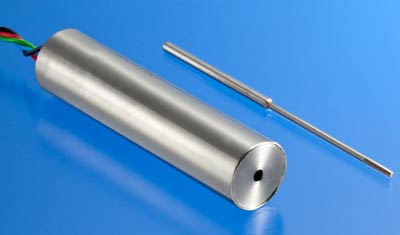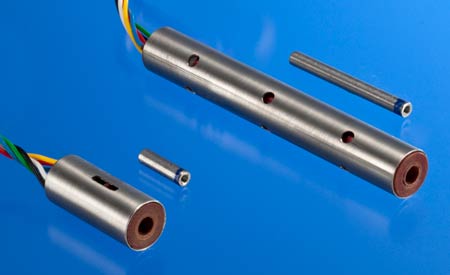Guide to Selecting the Right LVDT for High Pressure Applications
Written by transtek_admin on 09/29/2022

For a majority of LVDT applications, standard units will fit the bill. However, certain operating environments have higher demands, requiring additional considerations and/or customization. Today, we’re focusing on various high pressure applications, and the how LVDTs can be configured to handle them.
Examples of High Pressure LVDT Uses
Servo valves, drilling equipment and high pressure pumps are just a few high pressure applications that employ LVDTs. Intense pressure is a major threat, since it could potentially crush the transformer, or at least cause seal breaks, allowing water to enter. It gets into the wirings and windings and shorts the unit. It’s toast. It doesn’t take much pressure to fail either, perhaps as low as 50 PSI or less. Though keep in mind that threshold changes across various environmental factors and specific uses.
Three Solutions
There are three different ways to deal with pressure. The optimal choice depends on the amount of pressure and room you are dealing with, besides what the overall application looks like.
- Off The Shelf LVDT – In this case, the buyer uses a standard product, but builds an isolation tube or weldment to protect it. Here, the core would move inside the weldment and trigger the LDVT. The isolation tube must be non-magnetic to avoid interference with the LVDT. Applications vary and include hydraulic servo valves used in drilling, fracking and mining operations, or heavy duty hydraulics, such as those used for gate measurement.
It is interesting to note that this approach is used in a minority of cases. Essentially, it requires that the customer solves the pressure challenge, but with that comes the responsibility and potential liability associated with it. It is often more prudent to trust an experienced manufacturer to provide a tailored solution for more extreme environments. - Vented LVDT – With this solution, holes are drilled throughout the LVDT. This allows the pressure to equalize, and avoids the unit from getting crushed. This approach works in applications that consist of either non-conductive fluid, or lack fluid completely, such those subject to high pressure air or inert gas.
- Ruggedized LVDT – Here, a custom LVDT will be built to meet the application’s demands. There are two general approaches. One is comprised of the tube that has the winding on it, but is then inserted into another tube. The ends are capped and sealed with epoxy. The tube itself acts as a weldment.
For more extreme cases involving water, a true welded unit is required. They are often made from thicker, heavier materials, adding to weight, wall thickness and cost. While the end result is bulkier, the unit is extremely solid and can withstand higher pressures, typically exceeding 5,000 PSI.

As you can see, LVDT’s can certainly handle the pressure of more extreme conditions. In order to specify the right one, you must consider the exact operating conditions. Then, select the approach that is designed for that environment, and ideally within budget. In doing so, you will have a durable solution that reliably performs over time, and avoids costly yet preventable failures.

